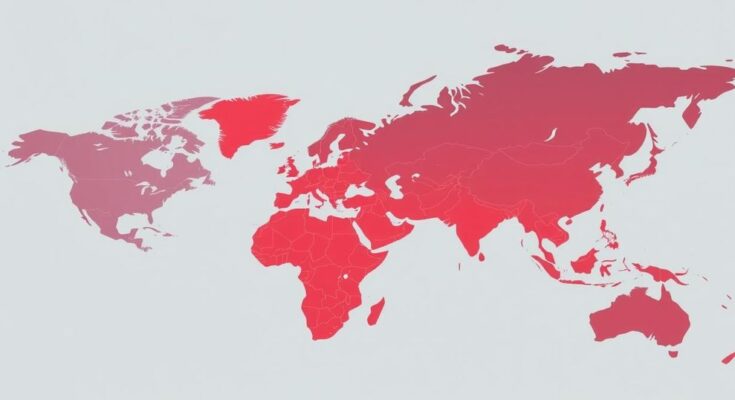The draft of President Trump’s travel ban includes Bhutan, a country known for its focus on happiness. While red-list nations like Afghanistan and Syria are to be expected, Bhutan’s inclusion raises concerns due to its minimal visa overstay rates. Responses from Bhutanese leaders highlight the disparity between perceived and actual security threats. The situation underlines the complexities of U.S. immigration policies as they pertain to smaller, politically neutral nations.
President Trump has circulated a draft travel ban list that includes Bhutan, a nation recognized for its unique focus on happiness. The draft organizes countries into three categories: “red” for an outright ban, “orange” for travel restrictions requiring interviews, and “yellow” for those under security review. While many countries on the red list, such as Afghanistan and Syria, are expected, Bhutan’s inclusion raises questions due to its long-standing commitment to promoting happiness over economic indicators.
Bhutan is a Himalayan kingdom known for prioritizing “Gross National Happiness”. It maintains an eco-friendly identity, being the only carbon-negative country globally, thanks to extensive forest coverage and a dedication to sustainable practices. The country tightly controls tourism, imposing a $100-per-day Sustainable Development Fee to balance economic benefits with environmental integrity. Bhutan’s isolationist policies began decades ago, limiting foreign influence by delaying the introduction of television and cell phones until the late 1990s.
However, Bhutan’s human rights record raises concerns. The “One Nation, One People” policy, aimed to unify the nation under a singular cultural identity, led to the disenfranchisement and displacement of citizens, particularly those of Nepali descent. A substantial number of Bhutanese refugees have relocated to the United States, particularly Ohio, highlighting tensions within Bhutan’s cultural framework.
The decision to classify Bhutan as “red” is likely tied to immigration patterns, as Bhutanese nationals have a notably high visa overstay rate at 12.71 percent, despite the actual number involved being minimal. This statistic has sparked national security concerns, as it may suggest irregular migration, despite the total number of overstaying individuals being only around 23.
In contrast, the overstay rates of larger nations such as China and Russia, albeit lower in percentage, translate to thousands of individuals overstaying their visas, suggesting that Bhutan’s small population skews perceptions of its immigration patterns. The Pew Research Center indicates a steady population of approximately 24,000 Bhutanese in the U.S. from 2015 to 2019, with very few new arrivals in the preceding years.
Responses to Bhutan’s potential designation on the red list have been critical. Former politician Karma Loday expressed concern regarding the unfairness of comparing Bhutan to nations with histories of terrorism, highlighting the country’s inability to pose a security threat. This represents a recurring theme, as Bhutan previously faced similar immigration policy challenges under the Trump administration, including a requirement for visitors from high overstay countries to post a significant bond.
The inclusion of Bhutan in Trump’s draft travel ban presents a perplexing scenario given the country’s notable focus on happiness and its non-threatening international stance. Its high visa overstay rate, while statistically significant, translates to an actual low number of individuals, raising questions about the motivations behind its designation. Responses from Bhutanese leaders underscore the disparity between perceptions of security and Bhutan’s true political environment, emphasizing a need for a more nuanced understanding of immigration policies affecting small nations.
Original Source: www.independent.co.uk




